Introduction
I was drawn to this piece because it depicts powerful female protagonists. Much of the art we have studied thus far has been from time periods in which the only active roles women have are in domestic scenes. Despite the violent nature of the action in this painting, I was intrigued when I saw females as lead figures in the art, let alone as figures in positions of power. After doing a little research, I found this biblical scene has been the subject of many art pieces, but no one has portrayed the scene with as much realism or with as clear of an intent to portray the power of women, rather than their beauty. In relation to the time period especially, this biblical portrayal of Judith was popular as the Catholic Church was battling the Protestant Reformation and the Ottoman Turks who associated their identity with Holofernes.
Background
The artist, Artemisia Gentileschi, was one of the first female artists to experience success in the 17th century. While this piece is said to be the epitome of her career, she created many paintings featuring strong female leads. She was the daughter of a painter who styled his works after Caravaggio. Gentileschi learned to paint in her father’s workshop. At the age of eighteen, she was raped by one of her father’s colleagues. After she was tortured to confirm the honesty of her testimony, her rapist was convicted, but the judge in the trial made sure he received no punishment. Instead, Gentileschi was quickly married off and forced to move to Florence. Once she was settled in Florence, she gained the support of Grand Duke Cosimo Medici and pursued her art on commission. It is speculated that the Holofernes in this painting represents her rapist and that this was her imagined revenge killing of him.
Analysis
Let’s look in depth at how the stylistic elements of baroque are used by Gentileschi. Judith’s strong grip on the sword is centered in the painting to immediately draw the eye to the bloodiest part of the scene. Light is also skillfully used to highlight where Gentileschi wants the viewer’s focus: the faces and emotions of the subjects. Everything else behind the subjects fades to black. This is an instance in which you can recognize the influence of Caravaggio and the dramatic form of chiaroscuro, tenebrism, in the use of light and shadows to manipulate the gaze of the viewer. Also note there is not a picturesque landscape behind the women, as was common in Renaissance paintings, or any other distracting background details. The viewer’s focus is being expertly controlled by the use of light and absence of background details to highlight the killing of Holofernes.
Secondly, the use of lines keeps the viewers attention focused on the action. Holofernes’ arm reaches directly up to the maidservant’s neck in a vertical line, trying to keep her away from him. The second woman’s arms form diagonal lines reaching towards the man. One to pin his head down and one to pierce his neck. The mattress beneath him forms a horizontal line and also serves to create the subliminal message that he committed a sex crime. This is furthered by the fact his lower body is still wrapped in the sheets and the rest of the bed is clearly unmade.
Lastly, Gentileschi expertly employs a naturalistic depiction of human emotion. It is not surprising considering her father, who taught her how to paint, was influenced by the works of Caravaggio. You can see the life leaving the eyes of the man, the strained looks on the women’s faces, and the splattered blood is in the foreground flaunting the intensity of the scene and its emotions. The use of light and shadows, lines, and emotions combines to keep the viewer wrapped up in the moment and invested in the struggle of Judith and her maidservant, Abra.
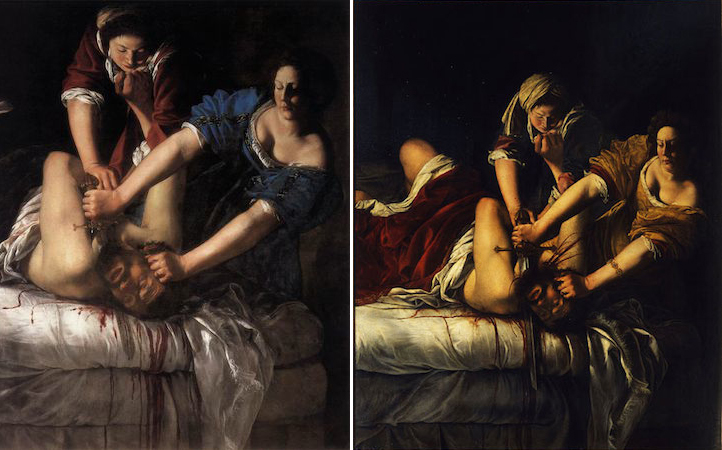
Gentileschi painted the same scene twice at different times. The second version comes after years of refining her skills and was likely commissioned by the Medici family as it comes from her time in Florence. It is more detailed and violent and features her signature in the bottom right corner. I will not be discussing the difference between the two, but this article does a wonderful job if you are interested.
A Few Examples of Gentileschi’s Other Works
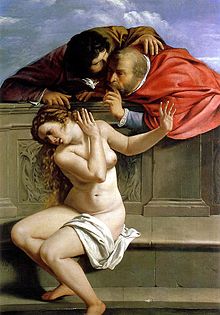
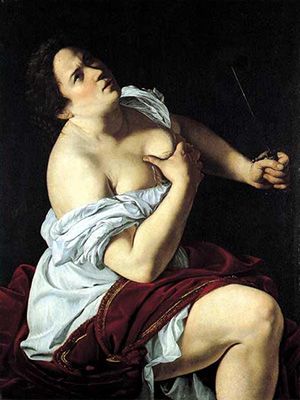
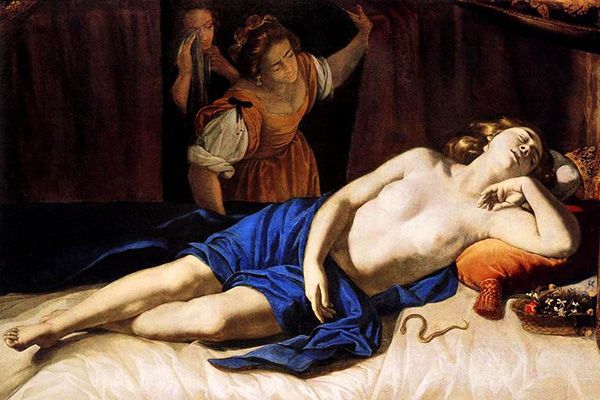
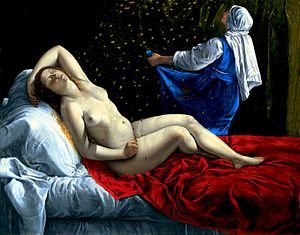
Sources
Art Institute of Chicago. “Violence and Virtue: Artemisia Gentileschi’s “Judith Slaying Holofernes.” Art Institute of Chicago. October 17, 2013. Accessed February 21, 2019. https://www.artic.edu/exhibitions/1673/violence-and-virtue-artemisia-gentileschi-s-judith-slaying-holofernes
Dr. Camara, Esperanca. “Gentileschi, Judith Slaying Holofernes.” Khan Academy. Accessed February 21, 2019. https://www.khanacademy.org/humanities/monarchy-enlightenment/baroque-art1/baroque-italy/a/gentileschi-judith-slaying-holoferne
Souter, Anna. “Artemisia Gentileschi Artist Overview and Analysis.” The Art Story. Accessed February 21, 2019. https://www.theartstory.org/artist-gentileschi-artemisia-artworks.htm
The Art History Archive. “Artemisia Gentileschi.” The Art History Archive. Accessed February 21, 2019. http://www.arthistoryarchive.com/arthistory/baroque/Artemisia-Gentileschi.html
These are very violent pictures for sure, and that violence I am sure is what gives it its shock value to the awaiting audience. I find it interesting to compare the two paintings next to each-other and see the differences, the more intense facial expressions and change of colors. Great post!
LikeLike
Action and temporary scenes are characteristic of Baroque art. The importance is on intentions. This is a very classic Baroque piece. I appreciate your analysis of the lines and the influence of shading in the art. They all work to focus your eye to the point of the work. Without having explained the artist’s personal history, you could very easily determine the conflict within the piece and the artist’s mind. I notice also that between the paintings, the first is more focused on the act of the killing while the second is more focused on the lighting and elements of the painting. I believe this also shows the lapse of time and some healing.
LikeLike
I think these pieces are quite interesting and I like how you analyzed and gave detail and history. I feel some what of a power coming from these paintings. I wonder what she was thinking when she was painting them. There’s definitely a difference between the two paintings and I like how the darkness brings out the detail.
LikeLike